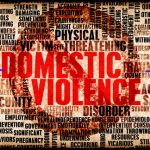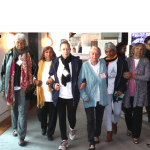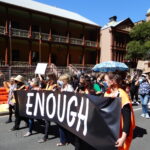State-Sanctioned Violence Against First Nations Women: An Interview with Professors Carlson and McGlade
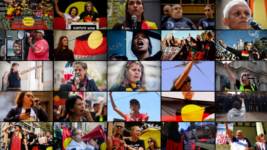
Whether you take prime minister Scott Morrison’s change-of-heart sentiment in relation to his government’s approach to gendered violence as genuine or not, one thing is certain, the burgeoning March for Justice movement has forced change at the highest level.
Yet, as this national discussion unfolds, senior First Nations academics – Associate Professor Dr Hannah McGlade, Professor Bronwyn Carlson and Dr Marlene Longbottom – have stressed that the rights of Aboriginal and Torres Strait Islander women, and the violence they face, should be central.
“Sexual violence in Australia is deeply grounded in our colonial history which condoned systemic rape and sexual abuse of Indigenous women,” reads their statement that appears in Croakey.
“White women were complicit in this abuse, ascribing to the racist colonial narrative that denigrated Indigenous women as less than human.”
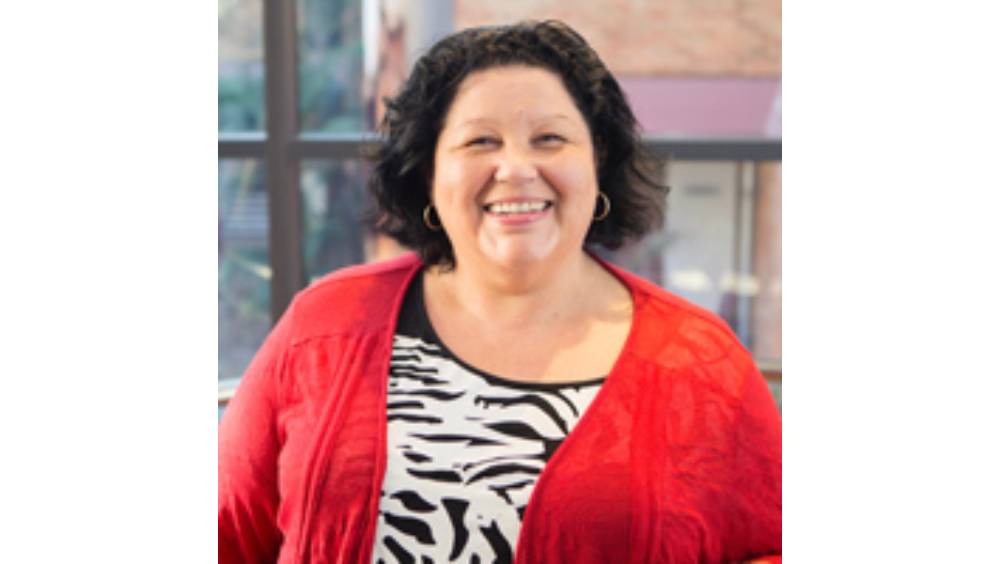
Indeed, both McGlade and Carlson are co-authors on the Deathscapes project’s Indigenous Femicide and the Killing State study, which posits that violence against First Nations women is a tool applied by settler colonial states, like Australia, to obtain and maintain control of land and resources.
The killing state
The Deathscapes study outlines that as the colonial project in Australia commenced sexual violence against First Nations women was promoted by the invading force through its laws, culture and propaganda.
This gendered violence was one arm of the genocidal logic underpinning colonisation.
The case study further asserts that today the disproportionate violence directed towards First Nations women perpetrated by civilians is implicitly sanctioned by the state, in a similar manner to that of carceral violence.
This is further perpetuated by the myth that the violence is all being carried about by Indigenous men.
On Invasion Day 2011, Aboriginal woman Lynette Daley was brutally raped by two white men in NSW. The attack was so vicious it killed her. The state DPP declined to prosecute the men twice, before they were finally convicted of aggravated sexual assault and manslaughter charges in 2017.
In September 2019, the family of a Yamatji woman known as JC in Geraldton called local police for assistance, as she was having a mental health episode. A group of officers surrounded JC out the front of her home. She was holding a butterknife. One officer shot and killed her.
These are just two instances revealing the violence First Nations women are subjected to in modern Australia.
Gendered settler colonial violence
The statement from the Aboriginal academics further asserts that as sexual violence against white women is currently gaining national attention, “sexual violence against Indigenous women and girls is being normalised and rendered invisible”.
Dr McGlade is currently involved in organising a petition that will be presented to the WA government calling for an inquiry into murdered and missing Indigenous women and girls, as well as the treatment of First Nations women in the press. The document currently has 1,600 signatures.
Sydney Criminal Lawyers spoke to Macquarie University Department of Indigenous Studies Professor Bronwyn Carlson, an Aboriginal woman who was born and lives on D’harawal Country, and Curtin University Associate Professor and Noongar woman Dr Hannah McGlade.
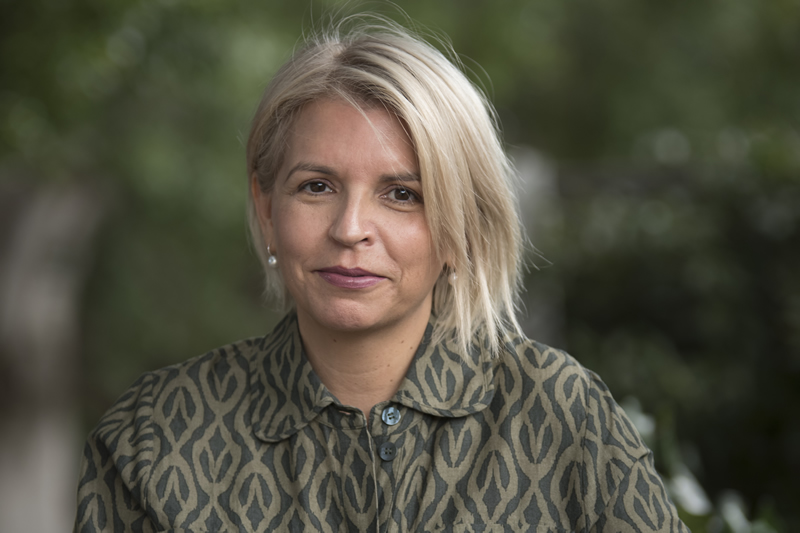
The burgeoning March for Justice movement is calling out gendered violence and the inequity that underpins it.
However, a number of academics, including yourself, have stressed that if we want to address violence against women, violence perpetrated against First Nations women should be central.
Professor Carlson, how would you say violence against Aboriginal women is playing out in the community right now?
When we try and think about ways in which we can tackle any form of oppression or discrimination, we should always look at those who are most affected.
In this case, it is definitely First Nations women, First Nations transgender women and nonbinary people in our communities. They are at the centre of the violence.
How do I see this playing out? Well, we see it in multiple ways. Just this morning the ABC brought out an article called Indigenous High School Students Expose Vile Racism, Demand Action to Better Educate Peers.
This was a group of Aboriginal girls who are being called the n-word. They’re being referred to as “gins”. They’re being physically assaulted.
So, we can see that same violence that we see at the higher level in regard to sexual assault and other violence at all institutional levels.
We can also see it in our prison system. Just last week, we saw three deaths in custody, which included one woman.
We see the deaths of Indigenous women for being incarcerated over things such as having a few too many drinks or being too poor to pay fines.
At every level, we can see it. In the schoolyard. In what is taught. In how people respond to Indigenous young people, right through to end of life.
You were a co-author on the Deathscapes’ Indigenous Femicide case study. The piece opens with a quote from you that reads:
“The killing of Aboriginal women has a long history, a long-revered history, where the colonial perpetrators of this violence are revered in their actions.”
Can you elaborate on how the perpetrators of such violence are revered?
I was talking specifically about a quote that appeared in the paper in the 80s by the Miles Franklin Award winner Xavier Herbert, who was reminiscing about his days as a youngster.
Herbert always had a fascination with Indigenous people, sex and sexual violence. It was always there throughout his life and writing.
So, here he is in the media reminiscing about how he was the biggest “gin rooter” around. So, gin, in this reference, is a derogatory term applied to Indigenous women and young girls.
Herbert was the biggest gin rooter around and he was reminiscing fondly about how they used to grab hold of Indigenous women, take them out on the pearling industry boats, rape them and inflict other forms of violence on them.
If they got pregnant, they would throw them overboard.
How does this person continue to be celebrated in this country?
That’s one example. We see other examples, when perpetrators of offensive crimes against Indigenous women walk free or barely make it to court.
If we think about another Indigenous woman who was violently sexually assaulted and killed on the beach. The headlines ran “After a Night of Wild Sex and Alcohol”.
The violent death of this Indigenous woman was put down to a raging party.
It’s often said that when the colonisation of this continent took place the rape of First Nations women was involved.
But what sort of scope of violence against Aboriginal women are we talking about? And would you say it was a purposefully implemented tool of the settler colonial state?
We can see across the world that it’s definitely a tool of settler colonialism. Rape and violence on Indigenous bodies is part and parcel of the project.
We can see that in other settler colonial nations where the rape of Indigenous women and LGBTIQ bodies is constant and targeted.
We can see that in Australia where the removal of children was gendered and segregated. We know the experiences of these kids – particularly young girls – within these institutions if we read the Bringing Them Home report.
We’ve heard young girls talk about how they were sold by their foster parents in that system. So, we know that Indigenous women and girls are targeted, and rape is a tool that is constantly used.
We also know now that the instances of rape against Indigenous women and girls in this country is significantly higher than what’s known and reported, even though what’s known and reported is horrific.
And lastly, Professor Carlson, the use of this often-lethal violence continues to the present as a component of the ongoing colonial project.
How should it be addressed? How can it be brought to an end?
There have been suggestions by Indigenous women where they say, “Burn it down”. They don’t mean literally.
They’re talking about a system that continues to oppress Indigenous people as a whole, and definitely targets those who are most vulnerable in our communities: women and the queer community.
When we say burn it down, we’re really talking about taking an abolitionist approach to this, where these systems that control and oppress us need to go.
This all starts really early on, when you think about the whole colonial project. Even if we think about the education system – because that’s the field I’m in – we’re still educated to believe that Indigenous people are worth less in this project than non-Indigenous people.
That plays out in multiple ways. It plays out in the violence that we see perpetrated on actual bodies. It’s a system wide approach.
Even if we look at the March for Justice, which was called over the horrific allegations made by one young woman who was allegedly raped in Parliament House. That sparked this massive movement, where women have had enough.
But if we think about that, at what time have we ever seen non-Indigenous women come together, protest and hold vigils for the death of an Indigenous woman? We don’t see that. We don’t see that public attention.
And what hope do we have if we think about the person who sits in the highest office in terms of our legal system? He is a man who is accussed of sexual violence himself – a man accussed of violence perpetrated against women.
He now adjudicates over our legal system and is allowed to remain in the seat.
Those are the things that need to be addressed if we’re going to make some attempt to eradicate violence against Indigenous women.
Firstly, Dr McGlade, as the movement against gendered violence rises, you and a number of other Aboriginal academics have asserted that any discussion must address violence perpetrated against First Nations women.
You’ve suggested violence against Aboriginal women is a hidden crisis. How would you say it’s playing out in the community today?
It’s something that every Aboriginal family is affected by, including children, who are the most vulnerable members of our community.
We have a very high level of violence against women and children. We know this is deeply rooted in our colonial history, which is ongoing.
There’s trauma. There’s disability. There is clear impact with the incarceration rates that we are seeing for both women and men.
We know that most Aboriginal women who are incarcerated have a history of violence and trauma. And we know that there are high levels of Aboriginal men who are being incarcerated for violence against women offences.
We know the data and the high numbers of Aboriginal women – particularly mothers – who are murdered.
Those statistics are particularly shocking. And they’re certainly well-known in our communities, where people’s lived experience is having women and girls murdered.
You were a co-author on the Deathscapes’ Indigenous Femicide case study. It tracks violence perpetrated against Indigenous women within the settler colonial states of Australia, the US and Canada.
The study finds patterns within these different settings. What do these patterns tell us?
The patterns show that violence against Indigenous women is endemic, systemic and structural. And they show the state is the perpetrator of violence towards Indigenous women.
That can be in direct or less direct ways, but still there is clear complicity of nation-states in this violence.
We say that’s not a coincidence. This is the logic of settler colonial society and ongoing processes of genocide linked to wrongful settler claims to Indigenous lands and their continued dispossession.
We show where the legal system, as an important institution, is extremely violent towards First Nations women. We show the cases and highlight how it’s so.
For example, in the case of Ms Dhu, she was seeking medical help for violence inflicted upon her by her de facto partner.
But she was apprehended by police under an archaic law for fines enforcement and was basically kept by the police in a lockup for 48 hours, where she died an excruciating death.
Medical professionals also participated in the racism against her and allowed it to happen.
I’ve recently completed a chapter with Associate Professor Stella Tarrant called Say Her Name: Naming Violence Against Aboriginal Women in the Justice System.
We outline the case of Tamica Mullaley and baby Charlie. We outline the case of Jody Gore, who was incarcerated for murder when she was self-defending. She was treated as the violent perpetrator.
There was racism throughout the process and the treatment of Jody. She got four years in gaol without compensation. She was strip searched twice a week to undergo dialysis.
Jody is a woman was taken away from her family and community to Bandyup prison in Perth. And we look at Ms Dhu’s case.
Currently, I’m also working on the murder of Stacey Thorne. She was a pregnant Aboriginal woman murdered in 2007 in Boddington, Western Australia.
Scott Austic, a white man, was convicted and then recently acquitted by an all-white jury of the Supreme Court, which was biased in favour of him. The media campaign was very biased as well.
Senior figures – the attorney general’s office, the attorney himself, former governor Malcolm McCusker – all campaigned for his acquittal, freedom and compensation, with, of course, no justice for Stacey and her family.
Stacey represents murdered Aboriginal mothers in Western Australia. Aboriginal mothers are more than 17 times more likely to be murdered in this state, leaving orphaned children and a trail of devastation.
The case study further challenges the notion that violence towards First Nations women is simply perpetrated by Aboriginal and Torres Strait Islander men. Dr McGlade, can you speak on this point?
This is a common myth that’s out there. It’s a racist myth that only Aboriginal men treat Aboriginal women violently.
We dispute that violence to women is cultural. Aboriginal women had strong cultural roles in women’s law and business.
We know that colonisation was extremely violent. There were massacres, and the violence towards Aboriginal women and children was also gendered and included widescale sexual violence and the femicide of Indigenous women.
I’ve studied these cases as part of my PhD. I’ve studied the research on this. Non-Aboriginal settler men could kill Aboriginal women and they would not be held accountable.
They could rape Aboriginal women. This was considered fine according to the white legal system that was imported here.
Aboriginal women still to this day battle terrible stereotypes in the courts if they do actually come forward and are fortunate enough to have any charges laid in relation to violence.
We see disparate outcomes when the perpetrator is a non-Indigenous male.
We really have to name the racism that’s prevalent in society today, which says Aboriginal people are all violent and, therefore, according to this narrative, there’s nothing that can be done about the violence because Aboriginal people are responsible.
We know this is absolutely not true. A high level of perpetrators are non-Indigenous men.
The state is sanctioning this violence. It’s neglecting its duty to prevent the violence towards Indigenous women. And it’s silencing Indigenous women’s voices and leadership to end this femicide.


